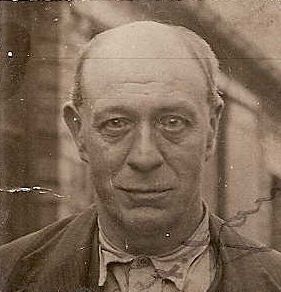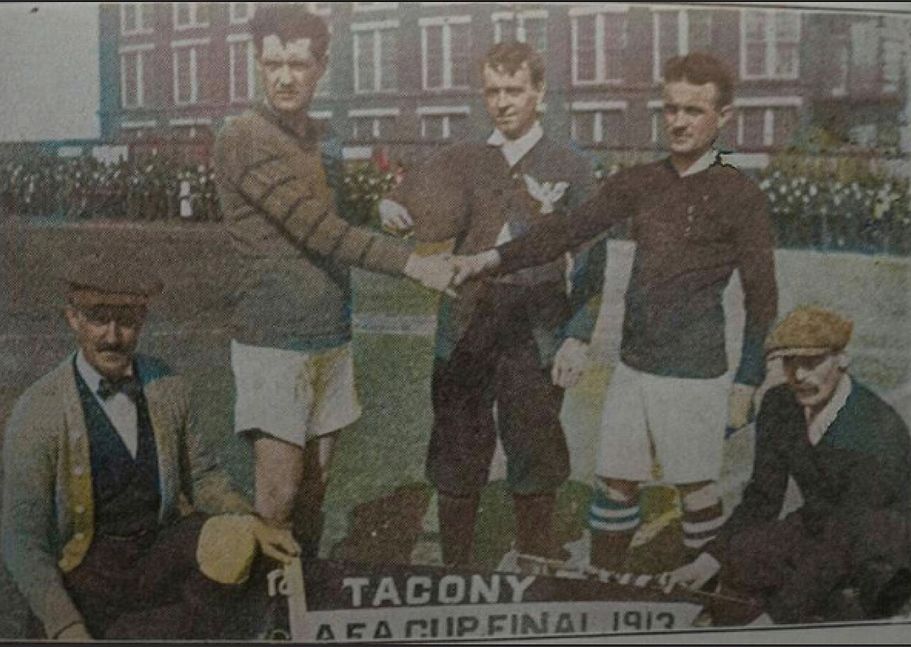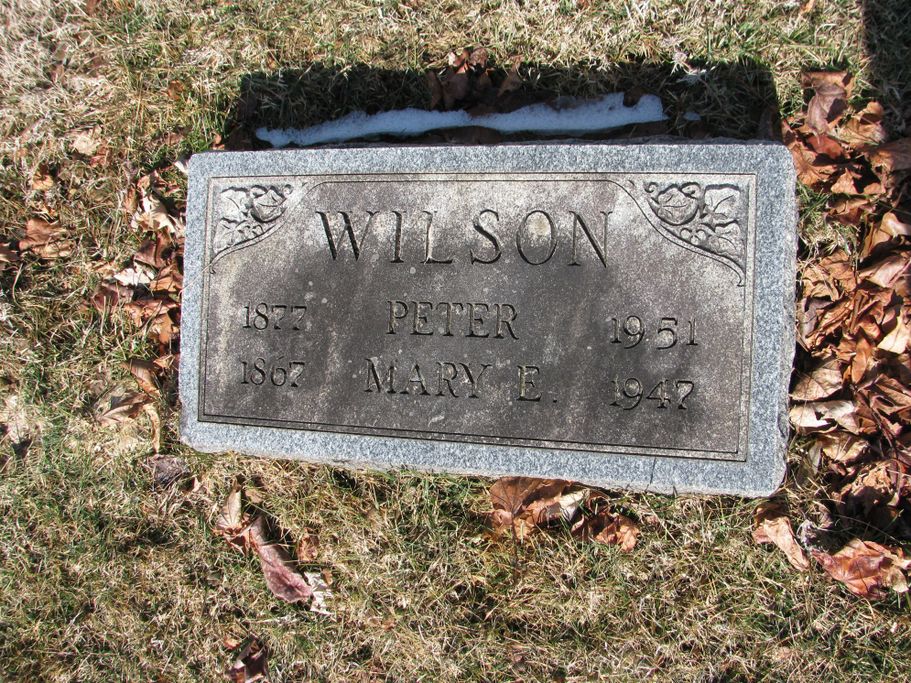Peter Wilson

One of the first to be inducted into the U.S. Soccer Hall of Fame was Peter Wilson, in 1950. His inclusion was on the basis of a twenty-five year playing-career from 1895 so to 1920 on each side of the Atlantic.
In fact the details of Wilson's football career in his Hall of Fame profile are incorrect on several counts, notably that he, one, played professionally and, two at St. Johnstone, an amateur club until 1911. But on three facts it is accurate. The first is duration. The second is that he was a Scot and the third that he was a "soccer" pioneer playing in an era and probably for a number of clubs of pivotal importance to the implantation of the round-ball-game in the United States. The only proviso is that there might, according to American expertise, be two of him, although we can only find one.
Our Peter Wilson was born in 1876 not in St. John's Toun, i.e. Perth, but in Johnstone in Renfrewshire. He was the eldest son of an Iron Dresser from Elderslie and a mother from Galloway, growing up with the town-team good, semi-professional but junior and with several boys, amongst them a certain Bryce Scoular aka Tommy Hyslop, who went on to play at the highest level, including international. At fifteen he was a Flax Worker, at nineteen the suggestion is that he, a full-back, was turning out for Johnstone, by then probably joining his father to trade. However, at twenty-one he was on his way, to the USA, to Pennsylvania's largest city, working there moulding metal for the next fifty years until retirement at the age of seventy-three.
On arrival in the City of Brotherly Love 1897 it is clear he rapidly joined the local soccer scene. On his death fifty odd years later he was described as a member of The Old Timers' Soccer Association. But the end of the 19th Century was as organised football in the USA, like the economy in general, had begun to struggle. Its then foremost competition, the American Cup, was suspended in 1899 and did not revive until 1906, by which time he was thirty and had just married, to a widow from Delaware, Mary Emma Faulkner, with whom he was to have one son. born in 1909.
However, from the restart of the cup and the foundation that same year of the National Association Football League Wilson, or at east a Wilson or Wilsons, is reported to have been associated or featured successively for several teams. In 1904 it is Philadelphia Hibernian. In late 1905 there is a mention with Paterson Rangers of New Jersey but not of recorded appearances. In very late 1905 and early 1906 it is starts with neighbouring Kearny's Scottish-Americans. Indeed in April 1906 a Wilson full-back is in the team that also included Johnstone-contemporary Tommy Hyslop and reached the American Cup semi-final. Moreover he was also included in that season's American Football Association (AFA) Select eleven. And he is also with the same Scots-Americans for the start of the next season, although curiously not in the line-up to make the 1907 final.
At that point, although no doubt still playing, there is a hiatus in recorded appearances until 1910-11 and with Philadelphia Hibernian once more. In April 1911 the Philly Hibbies would win the American Cup with a Wilson as left full-back and captain. And after another mini-hiatus its seems he would do it once more. In 1913 in the same Cup, with a Wilson again captaining, again from full-back, now another Paterson team, the True Blues, not only went a stage further than Scots-Americans seven years earlier but emulated the Hibernian team of just two years prior; a semi-final and two won finals in six years.

And here finally we have a picture of him in his playing days, indeed one that sums up the Scottish input to the American game. Prior to kick-off the captains shake hands. Wilson, recorded as and identifiably the same Peter Wilson above but with hair, is on the left. On the right is Bob Morrison, Glasgow-born, who from the next season would became a founder of perhaps the greatest force on 1920s American soccer scene, Bethlehem Steel.

The second Cup-win was probably the high-point in Wilson's playing career with the suggestion that he, now in his late thirties, might have moved first to Pawtucket Rangers. It was now based around the Coats mill in the town and in 1914 joined the new Southern New England Soccer League. And from there he could have returned to Tacony, by then the Disston, later Henry Disston, company team. Certainly he would live out the rest of his life in Philly, predeceased by almost two decades by Mary and himself passing in 1951 to be buried with her in the local Hillside Cemetery.
Birth Locator:
1876 - 9, High St., Johnstone, Renfrewshire
Residence Locations:
1881 - 18, Laigh Cartside St., Johnstone, Renfrewshire
1891 - 38, Church St., Johnstone, Renfrewshire
1901 - N/A
1910-20 - 3316, Second St., Philadelphia, USA
1930 - 3356, North Lawrence St., Philadelphia, USA
1940 - North Marshall St., Philadelphia, USA
1950 - 2560, Carol St., Philadelphia, USA
1951 - 5245, N. Marshall St., Philadelphia, USA
Death Locator:
1951 - 5245, N. Marshall St., Philadelphia, USA
Grave Locator:
Hillside Cemetery, Philadelphia, Pennsylvania, USA
Back to Johnstone & Paisley,
the Cart Trails
or the SFHG Home page